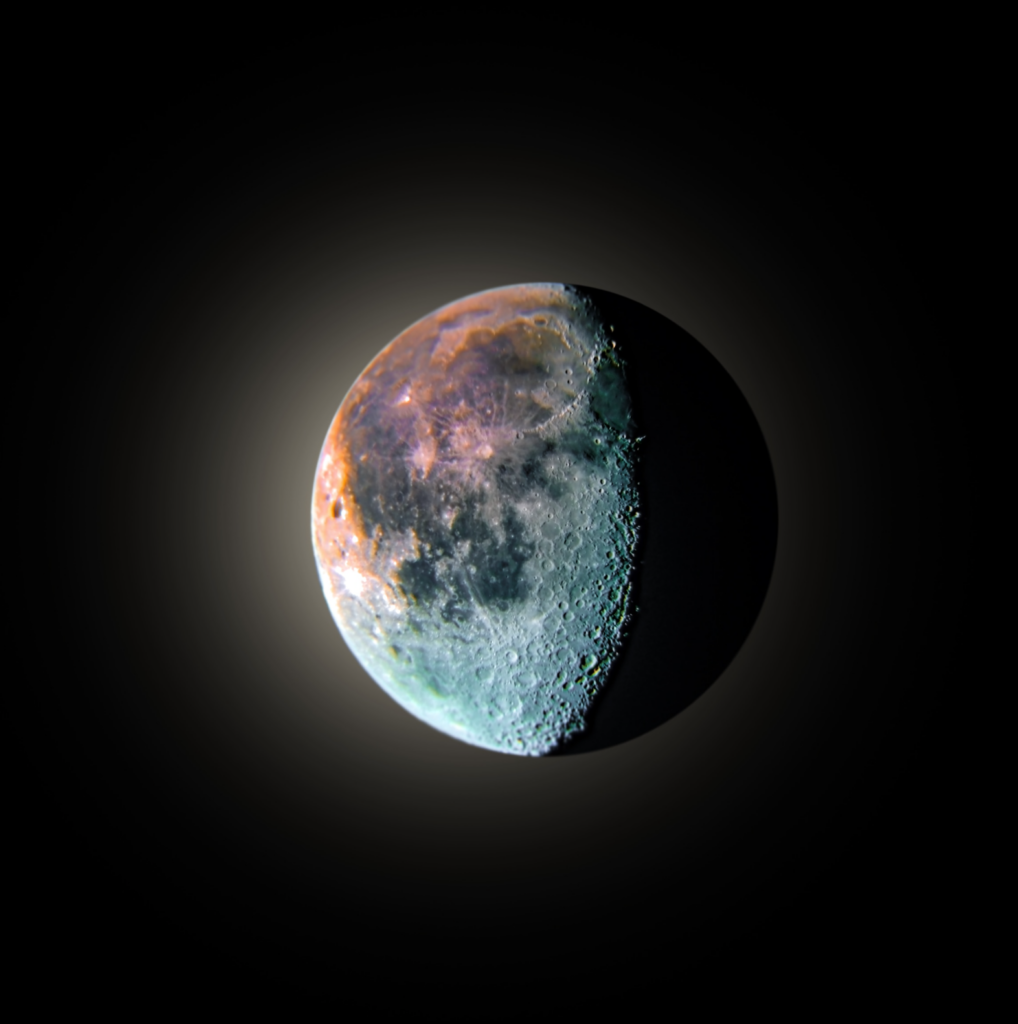The Undergraduate Research series is where we feature the research that you’re doing. If you are an undergraduate that took part in an REU or similar astro research project and would like to share this on Astrobites, please check out our submission page for more details. We would also love to hear about your more general research experience!
Apurba Samanta
Netaji Subhash Open University
This guest post was written by Apurba Samanta. Apurba is pursuing a BSc in physics from Netaji Subhash Open University and is currently applying to Master’s programs.
This picture’s colour is totally original, making it unique. We all know that the Moon’s surface contains water and frozen ice near the Tycho Crater and the Lunar South pole (these areas are not shown in this picture). This gives rise to the blue colour in the image.

In addition, we can see the temperature difference of the Moon’s surface. Also, this picture’s ocean side might contain some minerals, so most of the wavelengths of light are absorbed in this area, leading to the black colour. As we go to the North Pole, the colours change to orange or red, meaning large wavelengths are being reflected.
In conclusion, we captured some wavelengths of light which are reflected from the surface of the Moon. This enabled us to predict where the temperature is high or low, and where minerals, water, or ice may be present.
Software : PIPP, TOUPSKY, REGISTAX6, AUTOSTAKKER
Astrobite edited by: Sonja Panjkov
